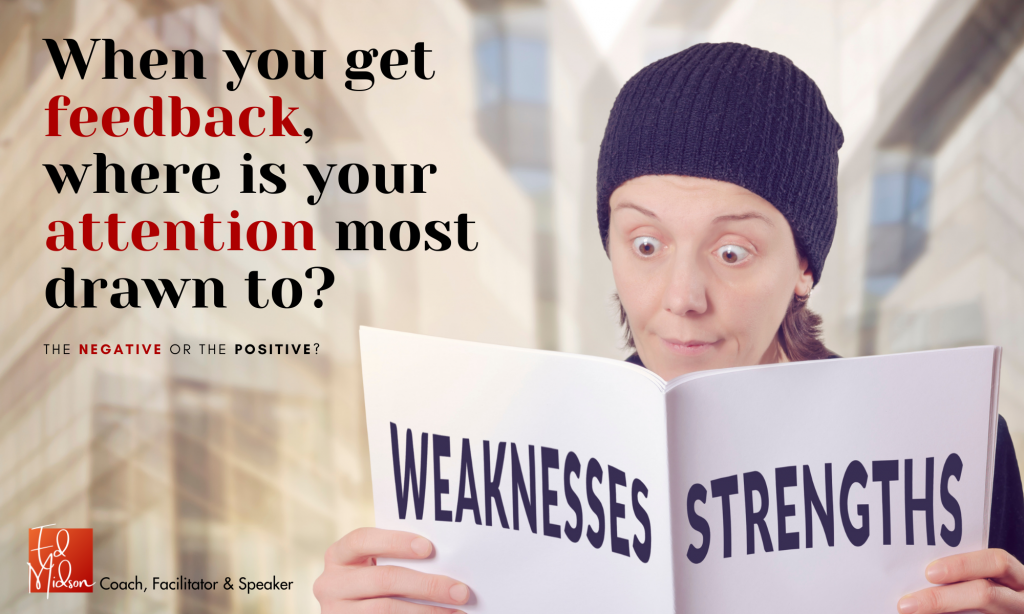Why should leadership be strengths orientated?
So many conversations about performance tend to focus on what people are doing too much or not enough. These weakness orientated appraisals have been proven again and again to be harmful to the person in question, as well as showing performance is less likely to improve. However, there is now an overwhelming body of research that holds the secret to how we can stretch, develop and even uncover hidden talent.
Strengths.
We have realised strengths, unrealised strengths, overdone strengths, and signature or core strengths. Working on weaknesses can be very draining, whereas our strengths are what really energise us. Managers and leaders that know their own and their team’s strengths and focus all their energy on helping them to be well deployed and developed, lead happy teams with a high degree of satisfaction.
The art to proactive performance management is to have regular strengths orientated discussions with all team members. Then, as far as possible, craft their role around those strengths. In doing this most ‘performance issues’ become resolved without the need for difficult conversations. In fact, studies have shown that on average strengths orientated team performance improves by 36.4%. Whereas, weakness focused leading reduces performance by 26.8%, which equates to a 63.2% difference in overall performance.

How we lean into difficult conversations matters
Difficult performance management conversations are not something we should avoid. Sometimes there is a need for them, but they are one of the most common pitfalls managers face today. There is a need to be sensitive in the way we approach performance, yet at the same time we need to be effective leaders of people. It can be incredibly hard to get the balance right. Support too much, with little challenge from the manager and lack of ownership on the part of the team member and little will change. Challenge too hard when support and readiness for change are low and grievances may be raised.
To proactively manage performance here we need to develop our emotional skills (beyond the classic view of emotional intelligence) and be able to connect with people wherever they are. These are skills that can be developed but it takes time to master the art of blending exploratory skills with a balance between genuine support and appropriate challenge.
The word ‘empower’, in itself, requires that permission to be powerful is given to someone. The issue that managers can run into here is that when an innovative thought or idea is presented that does not meet with their own, they either withdraw power, or worse overpower and use authority. The moment this happens trust erodes, and innovation diminishes. In mature cultures people are freer to innovate as there is a healthier relationship to risk and vulnerability. Where blame does not exist creativity can thrive. This is what we must seek to draw on in developing a strengths-focused culture.
From a position of strength
Strengths are something people talk about a lot, but we traditionally give feedback from a ‘perceived deficit’ position (i.e. weakness). In order to evolve this habitual way of critically evaluating people’s actions, behaviours, approaches and competency from a subjective position (however educated that subjectivity might be) we first need to strengthen our vocabulary and understanding of each of the strengths themselves. Only then can we offer feedback that really lifts and energises people to play to their strengths even more (and perhaps dial down strengths they’re overplaying). Strengths need to be a key feature of our communications style.
What we need to know about strengths
For strengths to be at the heart of the organisation we must begin by getting to know and understand strengths more. So, what is a strength? Currently the understanding is they are born from a pre-existing capacity for specific ways of behaving, thinking and feeling. We are normally energised when using them, and we can feel authentically aligned with who we truly are. What has been observed is that we can quickly find optimal ways of functioning within the strength area and that our ability to develop and perform them can increase and improve rapidly. The fundamentals of a strengths-based approach according to Alex Linley, a British, world renowned, researcher and authority in strengths development, there are five core elements (Linley, 2008):
- A focus on what is right, what is working and what is strong
- Strengths are part of our basic human nature, therefore every person in the world has strengths and deserves respect for their strengths
- Our areas of greatest potential are in the areas of our greatest strengths
- We succeed by fixing our weaknesses ONLY when we are making the most of our strengths
- Using our strengths is the smallest thing we can do to make the biggest difference
What evidence is there that a strength orientated approach is better?
One study that assessed the impact of an annual one to one, found those given an appraisal that focused on their ‘weaknesses’ showed an improvement of 18%, yet those whose appraisal focused on their strengths improved by an impressive 40%.
That said, meta-analysis of further studies are showing overwhelming evidence that focusing on strengths verses focusing on weakness has an even greater impact than that declared by the aforementioned study.
- The Corporate Leadership Council (CLC) found that emphasis on ‘personality strengths’ were linked to a 21.3% improvement in performance. Contrasted with ‘personality weaknesses’ being linked to a 5.5% decline in performance. Furthermore, focus on ‘performance strengths’ secured a 36.4% increase over all, whereas a focus on ‘performance weaknesses’ reduced performance by 26.8%. Results based on sample size of 19,187 in 34 organisations across 7 industries from 29 countries.
- A study featured in the Journal of Applied Psychology showed a significant increase in staff engagement that in turn led to several promising bottom-line results (where customer satisfaction, productivity and profitability all improved). Results based on sample size of 198,514 in 7,939 business units from 36 countries showed that productivity doubled, customer satisfaction improved twice that of an organisation with a weakness orientated approach (showing 90% satisfaction or above).
The bottom line
The easiest way leaders and managers can proactively manage performance is to make the process, not just more comfortable, but more insightful, helpful and uplifting for all involved. If you can create the right vocabulary inside the organisation, the notion of having to ‘manage performance’ can evolve into something far more about realising everyone’s potential.
To support this when delivering your programme, I would recommend looking at what science has shown to be the seven elements of strengths-based leadership (Linley, 2008) and work with learners to discover how these can be applied.




